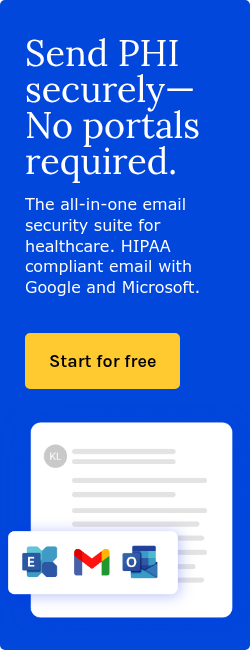
Obtaining consent for email marketing is essential to comply with privacy laws, build trust, and foster a positive relationship with your audience.
Understand consent requirements
“With limited exceptions, the [Privacy] Rule requires an individual’s written authorization before a use or disclosure of his or her protected health information can be made for marketing,” writes the HHS. Therefore, covered entities should ensure that email marketing aligns with HIPAA regulations, by obtaining consent to safeguard protected health information (PHI). Covered entities must also use HIPAA compliant email platforms, like Paubox.
See also: HIPAA compliant email marketing: What you need to know
Consent checklist
Use a double opt-in process
Collect consent through a two-step process:
- Individuals sign up via a form.
- A confirmation email is sent, requiring them to verify their consent by clicking a link.
This method ensures that recipients actively agree to receive marketing communications.
Clearly communicate purpose
Provide detailed information about:
- What types of emails will be sent (e.g., newsletters, health tips, product updates).
- How frequently emails will be sent.
- The recipient’s rights, including opting out.
Offer transparent opt-out options
- Include an easy-to-access "unsubscribe" link in every email.
- Ensure that unsubscribing is hassle-free and immediate.
Maintain accurate records
- Keep records of when and how consent was obtained.
- Track preferences to honor changes in consent (e.g., opting out or modifying communication preferences).
Related: How to document consent for text messaging and email communication
Personalize and add value
- Use consent to tailor content to the recipient’s interests and needs.
- Focus on delivering meaningful, helpful, and relevant information rather than purely promotional content.
Read also: Examples of personalized healthcare marketing emails
Periodically reconfirm consent
- Revalidate consent for long-term subscribers to ensure compliance with changing laws and preferences.
- Use this opportunity to refine your email list and engage with active recipients.
Best practice
Here are best practices for obtaining and managing consent for email marketing in healthcare:
- Use transparent consent forms: Clearly explain what recipients are signing up for, avoid pre-checked boxes, and link to a privacy policy.
- Minimal data collection: Only ask for essential information, like name and email.
- Team training: Educate staff on privacy laws and best practices.
Read also: Do you need authorization for face-to-face marketing?
FAQs
What’s the difference between single and double opt-in?
- Single opt-in: Users subscribe via a form without additional confirmation.
- Double opt-in: Users confirm their subscription through a follow-up email, ensuring genuine interest and reducing spam risks.
How do I ensure my email platform is compliant?
Choose platforms designed for healthcare marketing, offering features like data encryption, audit trails, and HIPAA compliant business associate agreements (BAAs).
What if someone withdraws consent?
You must immediately honor opt-out requests by removing the individual from your email list.
Learn more: What to do when an individual revokes authorization
Subscribe to Paubox Weekly
Every Friday we'll bring you the most important news from Paubox. Our aim is to make you smarter, faster.




